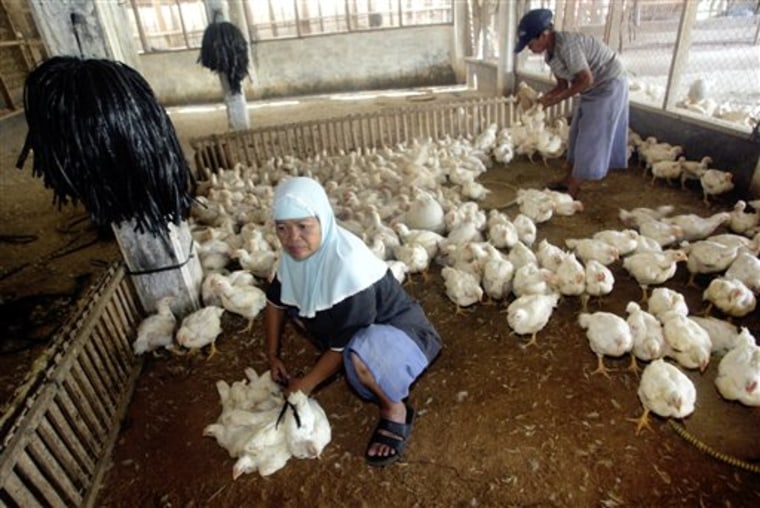Officials slaughtered more than 1,000 poultry Thursday in an Indonesian village where preliminary tests showed a 15-year-old boy died from bird flu, as the country struggled with a sudden rise in deaths averaging one every 2 1/2 days last month.
About 1,300 chickens were killed within a half mile of the boy's house in the Tasikmalaya district of West Java province, said Budi Utama, head of the local animal and fisheries agency.
Indonesian tests on Wednesday found that the boy had contracted the virulent H5N1 bird flu virus, and officials were awaiting confirmation from a World Health Organization-sanctioned laboratory in Hong Kong.
A hospitalized 8-year-old girl from Pamulang, on the outskirts of Jakarta, also tested positive in local tests, Nyoman Kandun, a senior Health Ministry official, said Thursday.
At least 36 people have died in Indonesia from bird flu, out of a world toll of 127, WHO says. The country averaged one human bird flu death every 2 1/2 days in May, putting it on pace to become the world's hardest-hit country, surpassing Vietnam's 42 deaths.
The boy's death is the third in the province from the H5N1 virus. A 10-year-old girl and her 18-year-old brother died within hours of each other last week in another village.
In North Sumatra province, six members of a single family in a tiny farm village recently died of bird flu and a seventh was sickened. An eighth family member was buried before samples were collected, but WHO considers her part of the family cluster of cases, the largest ever reported.
WHO experts have not found any link between the family and infected birds, which has led them to suspect human-to-human transmission. Only blood relatives — no spouses or in-laws — were sickened and no one outside the family has fallen ill.
Indonesian health officials, however, have denied any human-to-human transmission and have downplayed the seriousness of the outbreak.
"I say firmly that it has not yet been transmitted from humans to humans," Health Minister Siti Fadilah Supari said Thursday.
Who scientists suspect human-to-human transmission has also occurred in a few other smaller family clusters, all involving blood relatives. Experts theorize that could indicate some people have a genetic susceptibility to the disease.
Bird flu remains hard for people to catch, and most human cases have been traced to contact with infected birds. Experts fear the virus could mutate into a highly contagious form that passes easily among people, possible sparking a pandemic. However, there has been no sign that the virus has changed.
